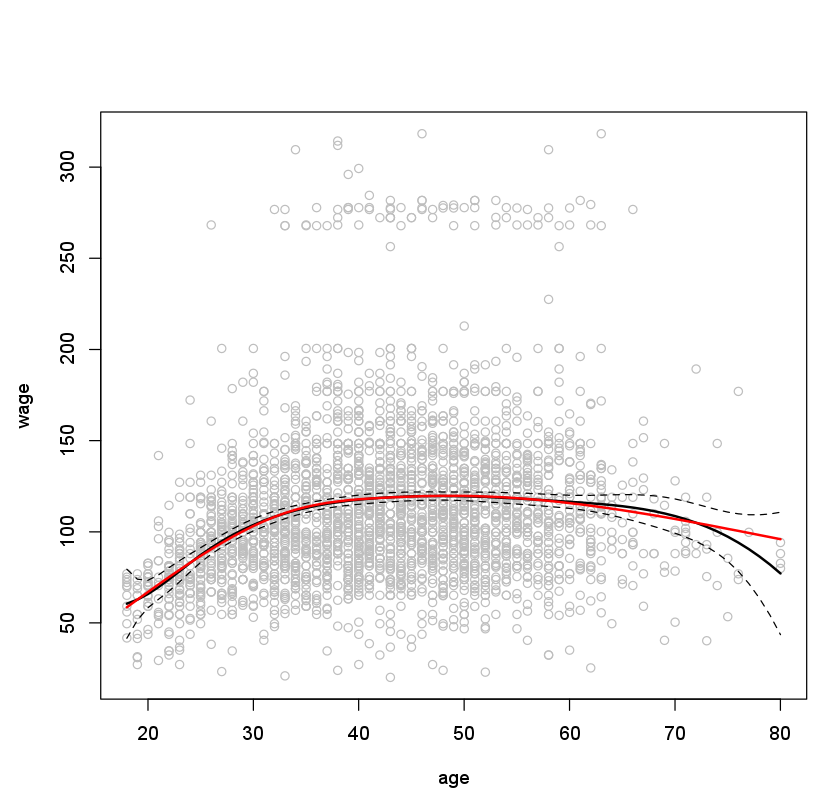In order to instead fit a natural spline, we use the ns() function. Here
we fit a natural spline with four degrees of freedom.
fit2 <- lm(wage ~ ns(age, df = 4), data = Wage)
pred2 <- predict(fit2, newdata = list(age = age.grid), se = TRUE)
lines(age.grid, pred2$fit, col = "red", lwd = 2)

As with the bs() function, we could instead specify the knots directly using
the knots option.
Questions
- Fit a natural spline on the Boston dataset with
medvas dependent variable andlstatas independent variable. The spline should have 5 degrees of freedom. Store the result in the variablefit. - Calculate the predictions of
medvfor a series of values oflstat, ranging from 0 to 50, in steps of 1. Store the point predictions in the variablepreds. If you useSE = FALSEinpredict(), the outputs are point predictions; if you useSE = TRUE, the point predictions are in the attributefit. - MC1: How many interior knots does this natural spline have?
- 1: 3 knots
- 2: 4 knots
- 3: 5 knots
- 4: 6 knots
Assume that:
- The MASS library has been loaded
- The Boston dataset has been loaded and attached